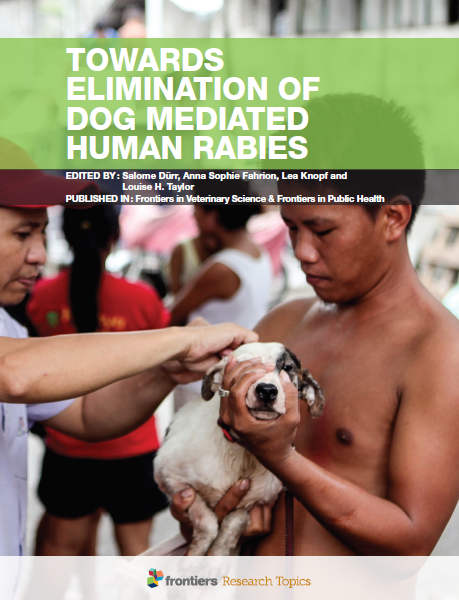Open science helping to eradicate rabies by 2030
A Frontiers research topic on the control and elimination of dog-mediated human rabies provides a vital overview of the challenges but also the opportunities to eradicate this deadly disease by 2030. The highly relevant and timely information will help rabies control researchers and practitioners from veterinary, public health and other sectors in their rabies elimination efforts.
Rabies kills a person every nine minutes. The occurrence of rabies is highly related to poverty, with almost all cases occurring in Africa and Asia. Over 99% of the people die from rabies because they have been bitten by a rabid dog. Once clinical signs appear, it is almost 100% fatal. Although rabies is one of the earliest-described infectious diseases, it is still categorized as a NTD (Neglected Tropical Disease). The disease exerts such a high burden on neglected communities due to inequality in access to proven rabies control measures.
But change could be on the way. On World Rabies Day this year, World Health Organization (WHO), the World Organization for Animal Health (OIE), the Food and Agriculture Organization of the UN (FAO) and the Global Alliance for Rabies Control (GARC) announced the new United Against Rabies collaboration’s ambitious ‘Zero by 30’ strategic plan to eliminate human deaths from dog-transmitted rabies by 2030. Activities helping to reach this goal are also occurring in rabies-free countries. For example, in the US and in several European countries, alliances against neglected tropical diseases exist, such as in the UK, Germany and more recently Switzerland and France.
The Frontiers research topic — Towards Elimination of Dog Mediated Human Rabies — comes at the perfect time to support countries to move more quickly towards a rabies-free future. It brings together veterinary science publications on epidemiological, educational, policy-related and economic aspects of dog and human rabies surveillance and control. The articles include experience and lessons learned from small- and large-scale rabies control programs, research aimed at improving the design and cost-effectiveness of rabies control programs, and analysis of the resources needed to expand rabies control efforts.
The research topic addresses concrete activities that will help reach the 2030 goal to eliminate human rabies from the planet. It starts with demonstrating the burden of the disease. Only by knowing how frequent rabies is in different countries, can control programs be planned, implemented and their success evaluated. The availability of high-quality surveillance data to support control efforts is absolutely vital. Second, improving the design and cost-effectiveness of rabies control programs is required. How many dogs should be vaccinated to control the disease in the different regions, countries and districts? Should adult dogs or puppies be targeted for vaccination? How should the vaccination coverage in free-roaming dogs be most ideally assessed? What is the effect of dog population management strategies, i.e. neutering of the dogs? What is the economic benefit of a One Health communication? Answers to all these questions can be found in the articles within the research topic.
Planning and budgeting to reach the global goal will also be vital. Almost all endemic countries are low-income countries where money to fund country-wide dog vaccination campaigns is very hard to find. One article in this research topic calculates the money, vaccine and personnel required over the next 13 years to be able to reach the 2030 goal, and the shortfall based in estimated current spending. The need for innovative funding sources to deal with this challenge, and one possible solution, Development Impact Bonds, are presented in another article of this research topic.
Overall, the research topic shows that knowledge and tools are already available to eradicate rabies. However, challenges and barriers remain. Long-term intensive programs are required to be able to achieve sustainable elimination rather than a temporary reduction in cases, which will eventually lead to resurgence of the cases. It is also crucial to plan interventions and control programs using a One Health approach that equally involves stakeholders from the veterinary and public health sectors. Only by working can a disease like rabies can be tackled.
View the research topic online or download the e-book: Towards Elimination of Dog Mediated Human Rabies
This article, by Salome Dürr, Anna Sophie Fahrion, Lea Knopf and Louise Taylor the Research Topic Editors, first appeared as a blog post on the Frontiers website.
